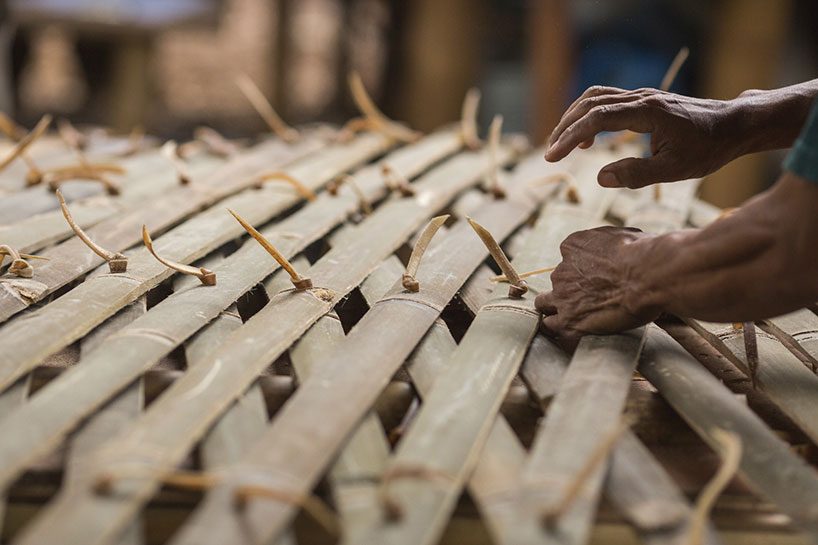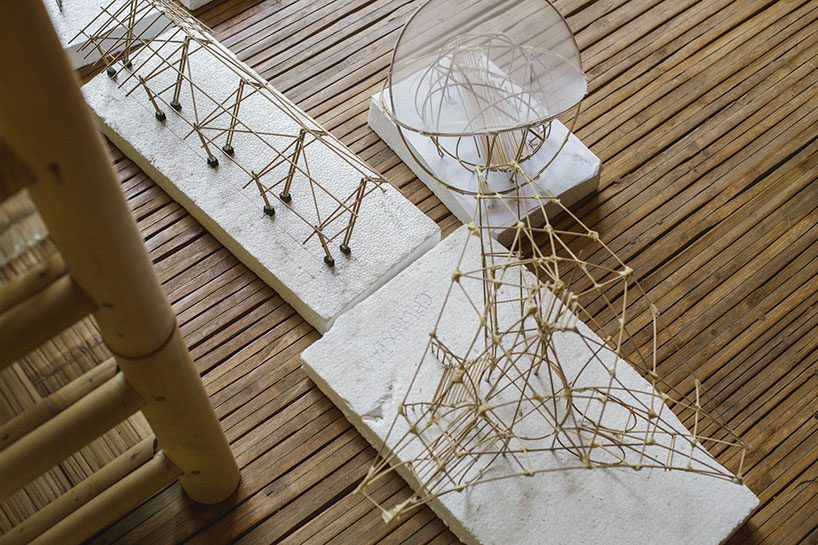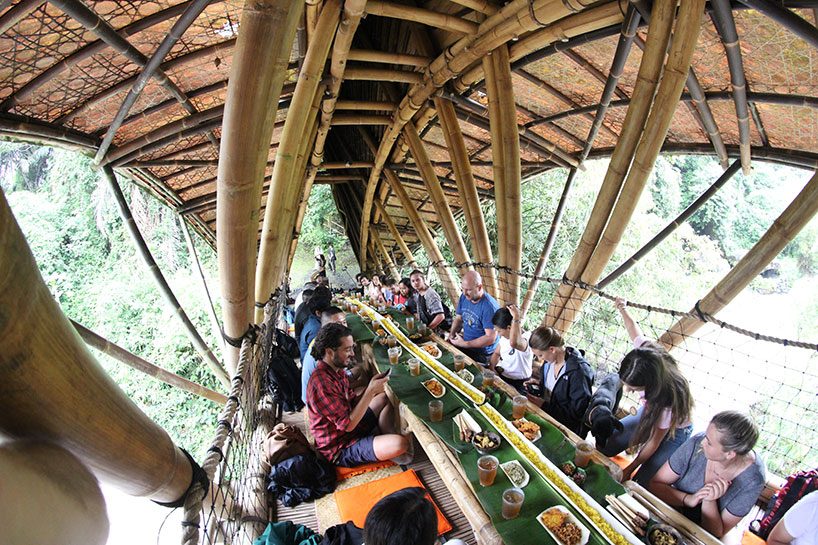
The materials we use, the people we work with, and the land we build on all inform our design process. We are creating a new design vocabulary based on this one material and exploring the way sustainable architecture and design can redefine luxury. IBUKU is a team of young designers, architects and engineers exploring groundbreaking ways of using bamboo to build homes, hotels, schools, and event spaces in Bali, Indonesia. IBUKU continues to expand the potential of building exceptional bamboo structures. These buildings are a testament to the power of bamboo and the possibilities of sustainable architecture. What we are doing is reinventing the rules and standards of what a building can look like. Nine of these buildings now make up Green Village, a community of luxurious private homes neighboring Green School. Together she and her team of talented Indonesian designers and architects have built sixty new bamboo structures in Bali. In 2010 Elora Hardy, John’s daughter, returned to Bali to continue the evolution of bamboo design under the name IBUKU. Jorge developed the concept of creating central basket-like towers to hold up larger buildings, as well as the ‘Lidi’ concept, giving us access to our signature curvilinear vocabulary. Together they were responsible for developing many of the design aesthetics and engineering concepts used by IBUKU today. Joerg Stamm, a German builder who specializes in bamboo, was a key contributor to this process along with artist Aldo Landwher. The construction of Green School led to many innovations in bamboo architecture and engineering. It stands as an outstanding example of what is possible when architects, engineers, designers, and craftsmen come together to build in a new way. The first structure at Green School was a bridge, connecting the two sides of the river valley campus.

In late 2007 John gathered a team to design and build the Green School. This ultimately became Kapal Bambu, the ‘bamboo ship’ showroom at the John Hardy compound in Bali. Inspired by the natural curve of the bamboo, they tied the tips of the poles together into a towering arch.
#KULKULFARM IBUKU FULL#
John’s first serious bamboo building was conceived with architect Cheong Yew Kuan in a rice field full of tall umbul-umbul flags. John soon came to see bamboo as the future of sustainable building and made a vow never to construct another wood or concrete building.

Linda’s work also inspired her friend John Hardy to take a greater interest in bamboo. She pioneered new treatment methods to preserve the bamboo and prolong its life. Linda Garland pioneered this movement, attracting international attention with her innovative designs in houses and furniture. In the 1980s, the arrival of young designers from western countries took bamboo building to an exciting new level. Bamboo has had a long tradition as a building material in Bali. How we started IBUKU’s origins lie in the belief that bamboo can change the way we build. Completed key projects include the Green School, Green Village, Sharma Springs, and Bambu Indah Hotel, which have appeared in international publications like Architectural Digest, Vogue and the Huffington Post. Upcoming projects are underway in West Africa, Lombok, and Bali. Ibuku has built over 60 bamboo structures in Bali, Indonesia, and around the region. We give our projects detailed care and attention from start to finish, including bespoke interior furnishings. We do this by designing fully functional homes and furniture that are made of natural substances and built in ways that integrate with nature. IBUKU’s goal is to provide spaces in which people can live in an authentic relationship with nature.


The traditional skills of Balinese craftsmen, combined with our design ideas and modern engineering enable us to create original bamboo structures that meet the needs of a diverse clientele.


 0 kommentar(er)
0 kommentar(er)
